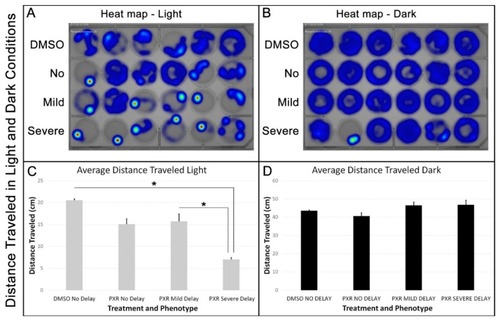- Title
-
Exposure of Larval Zebrafish to the Insecticide Propoxur Induced Developmental Delays that Correlate with Behavioral Abnormalities and Altered Expression of hspb9 and hspb11
- Authors
- Shields, J.N., Hales, E.C., Ranspach, L.E., Luo, X., Orr, S., Runft, D., Dombkowski, A., Neely, M.N., Matherly, L.H., Taub, J., Baker, T.R., Thummel, R.
- Source
- Full text @ Toxics
|
Propoxur exposure during zebrafish development results in three distinct developmental delay phenotypes: ( |
|
Zebrafish with propoxur-induced delays undergo physical recovery to obtain the general appearance of control zebrafish by 7 days postfertilization: ( |
|
Zebrafish severely delayed by propoxur treatment showed greater aversion to light with less movement at 7 days postfertilization: ( |
|
Abnormal movements observed in zebrafish at 7 dpf that were severely delayed by propoxur treatment at 40 hpf. ( |




